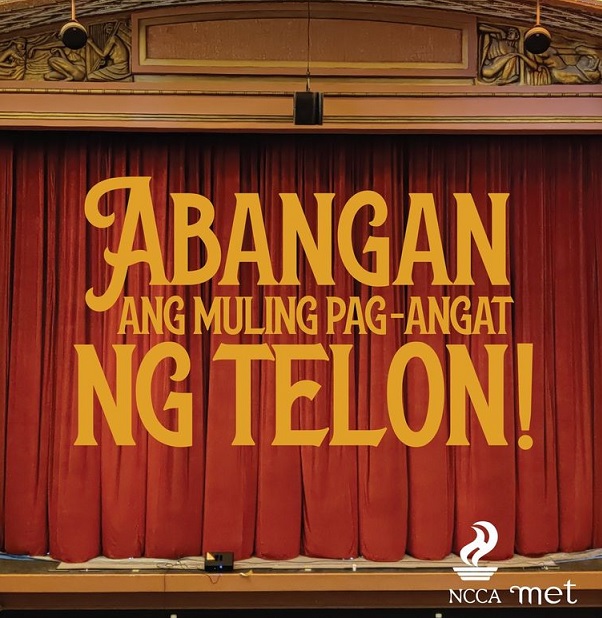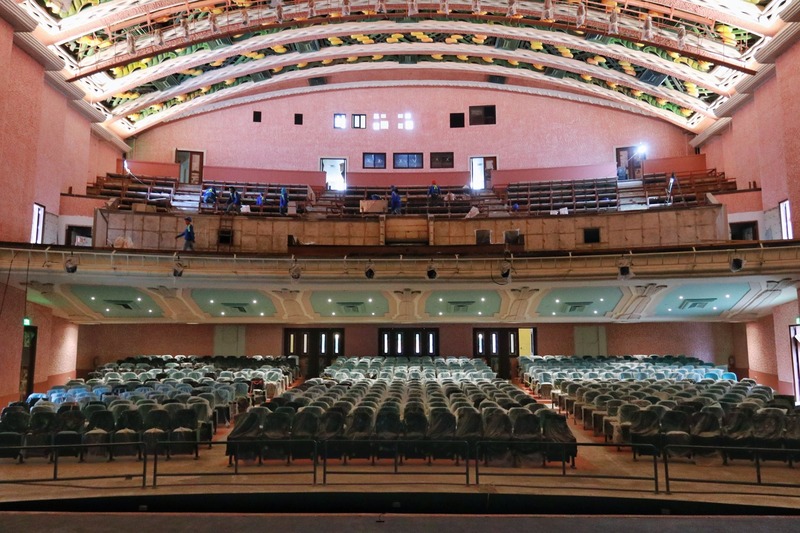
The restored main theater of the Met. NCCA
photo.
The change of name of the fully renovated Manila Metropolitan Theater to NCCA Metropolitan Theater –scheduled to re-open June 12 with a theater piece on Lapu-Lapu – does not sit well with many in the arts and culture community in the country.
Writer and conservation advocate Bambi Harper said the move is simply ridiculous and whoever had thought of it has no sense of history.
Writer Belinda Olivares-Cunanan thinks the new name will mistake the landmark for a basketball venue. “That’s what NCAA was all about in the days of Caloy Loyzaga, Moro Lorenzo and all the great basketball stars. Manila Metropolitan Theater is a very dignified name. Why attach the NCCA? Why do we always spoil a good thing? We should demonstrate in front of the Met and protest the NCCA attachment.”
Writer Elizabeth Lolarga posted on FB that for continuity’s sake, the old name of the Met should be retained. “It’s a historic landmark.”
Writer editor Thelma Sioson San Juan noted that the decision spoke of the tarpaulin mentality of bureaucrats. “Can you imagine if Carnegie Hall or Sydney Opera House changed its name every time governments changed?”
Pianist and music teacher Willie Aquino earlier noted this practice even in the United States. “I agree with you. It seems to be common. The New York Philharmonic Hall was changed to Avery Fisher Hall, the New York State Theater was changed to Koch Theater after the significant financial contributions from two billionaires –. Mr. Fisher and Mr. Koch.”
Actor-director Frank Rivera said the new name might confuse audiences and mistake the theater for a basketball arena because of the initials NCCA. “The acronym cannot help resurrect the glory of the Metropolitan Theatre as the seat of arts and culture.”
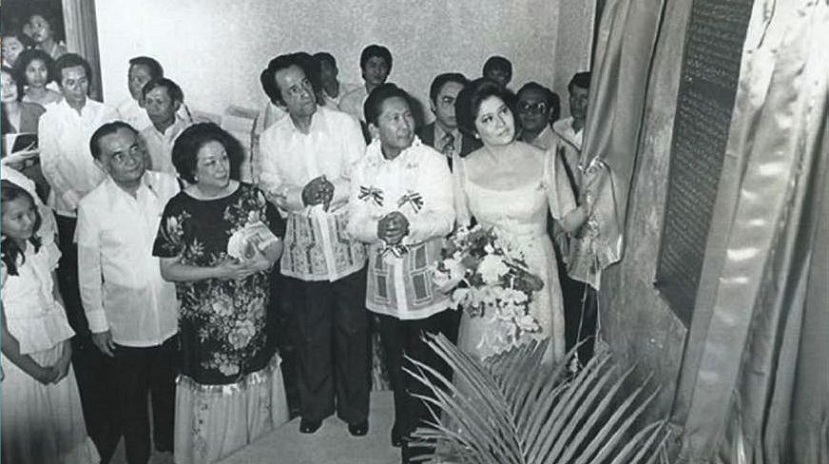
Former president Ferdinand Marcos and Mrs. Marcos with former Met executive director Conchita Sunico during the met reopening in 1979.Photo from Met archives.
Columnist Antonio J. Montalvan II pointed out that NCCA which was created during the post-Marcos period has no historic value compared to the Met. “Why choose non-history over history?”
Culture vulture and photographer Bernie Cervantes said that with this unpleasant development, Ms. Conchita Sunico and Nenita Manzano (former Met caretakers) must be squirming from their graves.
NCCA was created only in 1992 under the new constitution when Congress enacted Republic Act No. 7356 which institutionalized the establishment of the National Commission for Culture and the Arts.
After ownership tug-of-war with the City of Manila for some time, the Government Service Insurance System (GSIS) sold the Met to the NCCA to the tune of P270 million courtesy of the National Endowment Fund of the Benigno Aquino III administration.
In other words, the ownership fund did not come from NCCA coffers. Money used to own the Met was given by the previous administration, not from the agency’s regular budget.
Meanwhile, more outrage registered on social media when the new name was announced by NCCA in its official Facebook page.
Posted painter Phyllis Zaballero: “Why do they have a penchant or disease which makes them want to rename historic buildings, avenues, streets, plazas ad infinitum after themselves? Why erase the past? Why think that by renaming they can lay claim to any improvement? It is we, the taxpayer, who have the moral power to do that. (This is) distressing and unbelievably ignorant.”
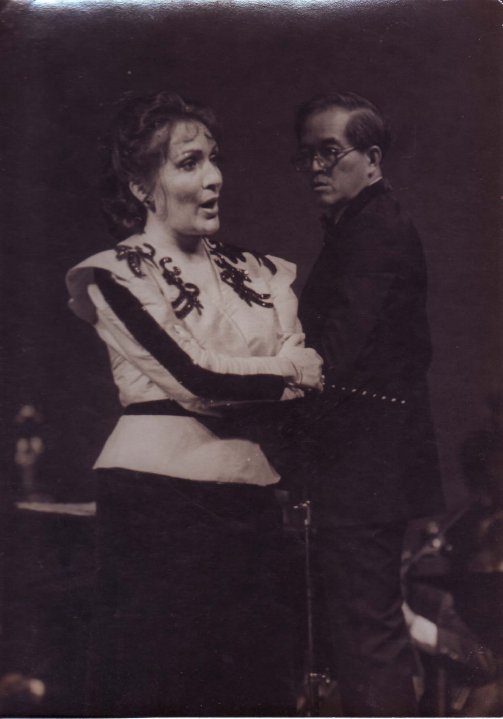
World acclaimed Romanian diva Nelly Miricioiu as soloist of the MSO with Sergio Esmilla, Jr. at the Met circa 1984.
The latest post from the official page of the National Commission on Culture and the Arts went thus: “Everyone’s excited to witness the revival of the Metropolitan Theater! Now called the National Commission for Culture and the Arts Metropolitan Theater (NCCA Metropolitan Theater), this Philippine architectural heritage surely holds a significant part in the lives of the Filipinos.”
Declared as a national historical landmark by the National Historical Commission of the Philippines and a national cultural treasure by the National Museum of the Philippines, the Manila Metropolitan Theater was sold by the GSIS to the NCCA in 2014 when initial steps were taken to begin its renovation.
An initial media tour of the historic theater early this year conducted by NCCA executive director Arsenio “Nick” Lizaso showed a spanking new edifice ready for cultural events.
But nobody had an idea the NCCA management will change its historic name to NCCA Metropolitan Theater. Even the symbolic representation of the city of Manila was taken out in the new name.
It maybe noted that Manila Mayor Isko Moreno and Lizaso as NCCA head (on top of his being CCP head) earlier agreed to help the theater flourish for the sake of Manila’s cultural community.
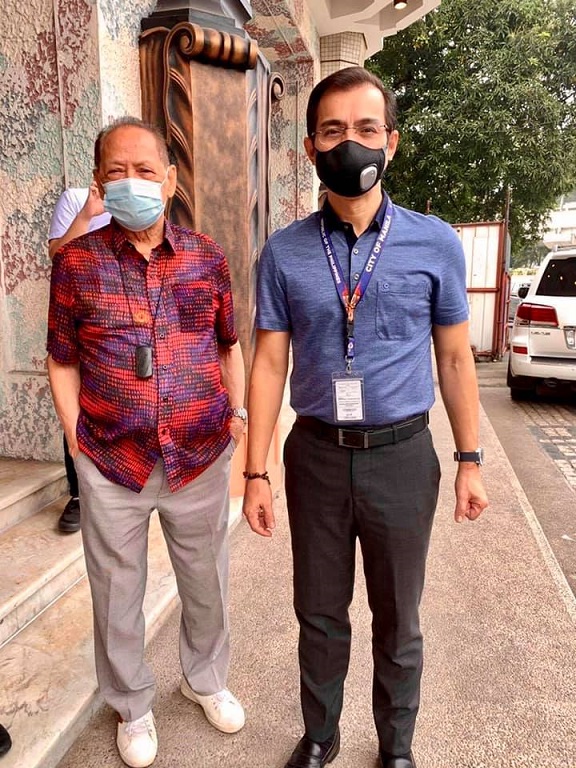
Manila Mayor Isko Moreno with NCCA head and CCP president Arsenio “Nick” Lizaso. The word Manila is gone in the new name of the Met. Photo by Adriana Agcaoili.
The re-opening — some 26 years after it closed in 1996 — is also a celebration of the fifth centenary of the Victory at Mactan and 500 years of Christianity in the Philippines. “The event will serve as the maiden show of the MET after 25 years since its closure in 1996,” NCCA said in a statement.
The Met will always be associated with its historic and recent past. The images are enough for materials for a period film.
The country’s first violin prodigy Ernesto Vallejo performing at the Dec. 10, 1931 opening, soprano Concordia and tenor Octavio Cruz in the first Met staging of Lucia di Lammermoor in 1948 and the later day musicals mounted by society grand dame Conchita Sunico who produced Filipino musicals like Hindi Kita Malimot, Malaala Mo Kaya and Dahil Sa’yo, among others.
Who can forget the Met for the opera icons who sang there? Montserrat Caballe and Nelly Miricioiu who received rousing standing ovations.
Yes, the grand dame of Manila theater is poised to make another comeback but with a difference. It has a new name not related to its rich history.
